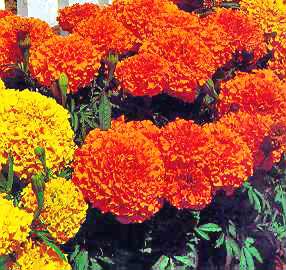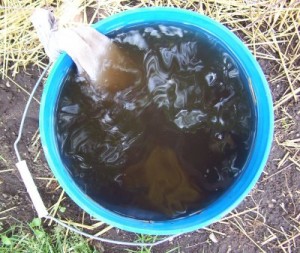The attraction to the tomato is irresistible. Hobbyists, professionals, and even the heartburn-laden can’t resist this fruit disguised as a vegetable. The colors and tastes are fathomless–purples, yellows, stripes, acidic, mild, sugary, and even peppery are used to categorize tomatoes.
The challenges in growing the perfect tomato are almost as numerous. Diseases, bugs, and gophers of ill repute flock to it like paparazzi in search of juicy weak spots. Perfection is never obtainable, but in order to have an abundant harvest of the delectable globes, we’ve provided some tips on getting the most out of your tomatoes.
1) Companion planting
Tomatoes are equal opportunity providers because they work well with an abundance of other plants. Some of the best companions are basil, borage, and marigolds. Basil repels flies and mosquitos, while giving the tomato extra flavor and vigor. Tomato horn worms steer clear of borage, which also gives the tomato extra growth and flavor. Borage will also attract a fleet of pollinators, ensuring numerous fruits for its tomato neighbor. Be forewarned: borage can grow rapidly and take over a garden. Make sure to plan ahead so that tomatoes and borage don’t battle for space.
Finally, marigolds (specifically African and French) provide a fortress of dazzling reds, yellows, and oranges. The pungent aroma will repel a variety of bugs intent on wrecking the tomato patch.

2) Plant at the right date for your area
Many an impatient gardener puts their tomatoes in the ground at the first sign of warm weather. The result is usually disastrous thanks to frost or other unfriendly weather making a mid spring visit. Check the date for your region through the Farmer’s Almanac or (for North Carolina) the NC State extension spring planting guide. Also, the common rule for planting tomatoes outside for Western North Carolina is on or after Mother’s Day.

3) Plant deep
Don’t be afraid to bury your tomatoes literally up to their necks. The best method is to dig a trench six inches deep and eighteen inches across for each plant. Take off any leaves that will be buried and lay the plant on its side. Three to four inches of tomato is all you need above ground. Don’t fret at the minimalism. All the tiny hairs on the plant’s stem are potential roots. The extra tributary of roots mean the tomato will able to hold more fruits, as well as being able to withstand the inevitable heat.
4) Fertilize, side dress, and prune
A good 5-5-5 granular fertilizer like Fertrell or Happy Frog should be dug or tilled into your bed ahead of time. Don’t overdo on the nitrogen (the first number on the fertilizer count), otherwise you’ll have lush green leaves with little fruit to show for it. Once the tomatoes are in, sidedress with a good compost like McEnroe. Feed them every couple of weeks with a fish emulsion/hydrolysate to provide the tomatoes with essential N-P-K and trace nutrients. Also, a weekly foliar spray with seaweed and/or a homemade compost tea will give your plants a healthy balance of beneficial microbes and cellular strength.

In order to avoid disease, prune your tomato leaves at the first sign of flowering. Take all the leaves off below the flower line. This will prevent water from splashing up on the lower leaves which attracts disease as well as allowing the plant to concentrate on fruit production. Do not prune when the plant is wet. In addition, supplement Bone Meal for Calcium (to prevent blossom end rot). If the tomatoes are already in and you can’t amend the soil with bone meal, use General Organics CaMg + for foliar feed.


Leave a Reply